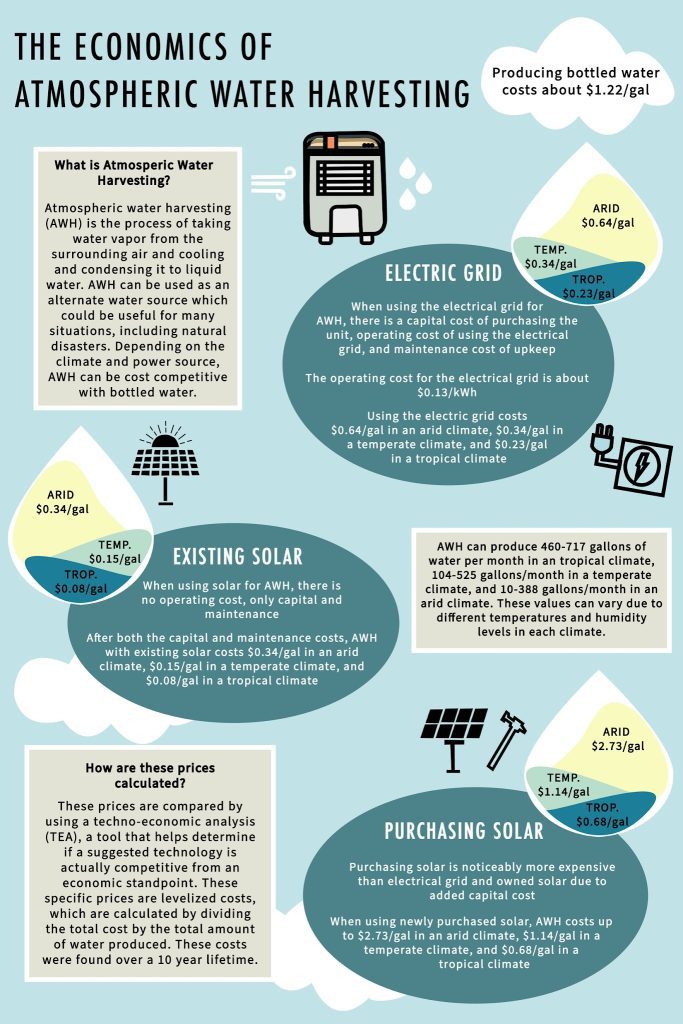By Katherine Leon, Civil Engineering Major, Mentor Prof Anjali Mulchandani
I had the opportunity to work with Anjali Mulchandani and learn about her research on Atmospheric Water Harvesting. I began with a goal of learning how atmospheric water harvesting works, how efficient and costly the process is, and why it’s necessary. To accomplish this goal, I read many articles and listened to interviews done by my mentor and her colleagues. Together, we decided the best way to communicate the importance of this research to a wider audience was to create an infographic displaying the costs of atmospheric water harvesting and how they compare to a common source of drinking water, bottled water. Atmospheric water harvesting is the process of taking water vapor from the surrounding air and cooling and condensing it to liquid water. Anjali’s research focused on using a dehumidifier for this process with three different power sources: the electric grid, pre-owned solar, and purchasing new solar. These three power sources were observed in three different climates: arid, temperate, and tropical. Depending on the climate and power source used, atmospheric water harvesting can be cost competitive with bottled water. Having insufficient water sources can lead many places, like New Mexico, to be in a drought for years at a time. Using this process as a source for drinking water can help many places throughout the world who normally struggle with unreliable water sources. In addition to being cost competitive to alternate water sources, atmospheric water harvesting can provide a necessary source of water in times of need when these other sources become insufficient.

